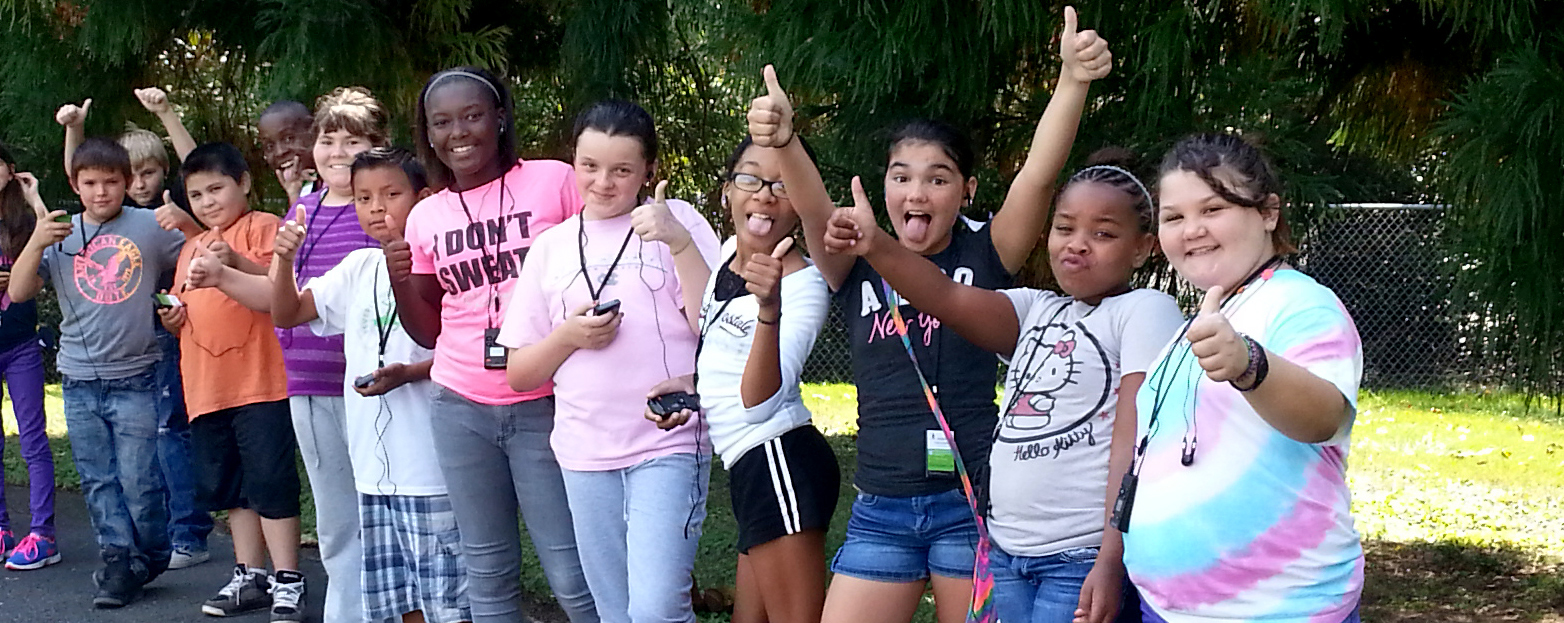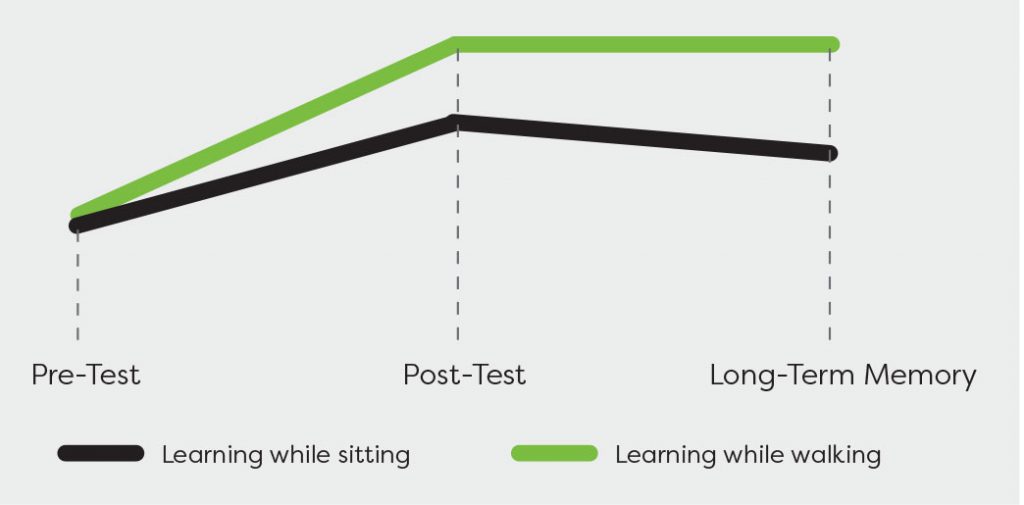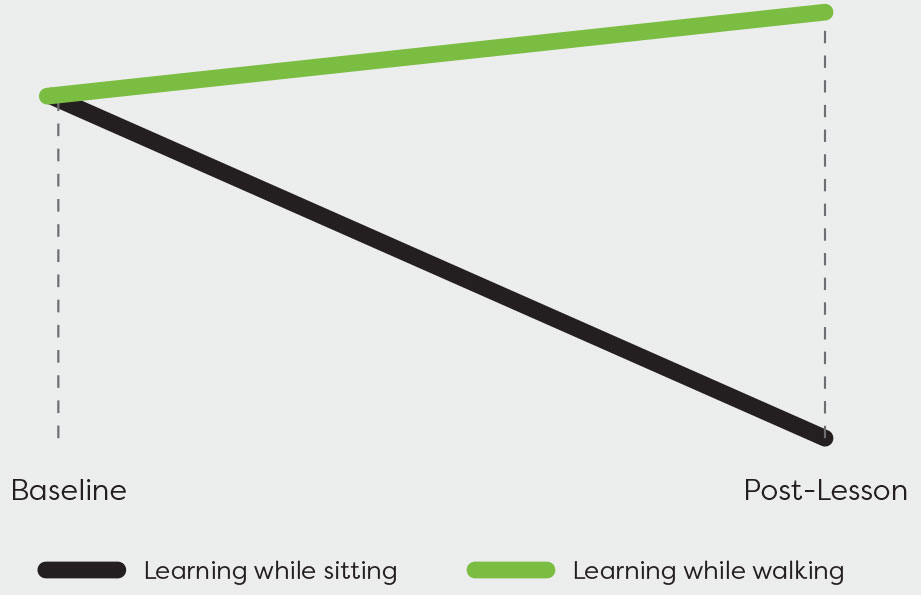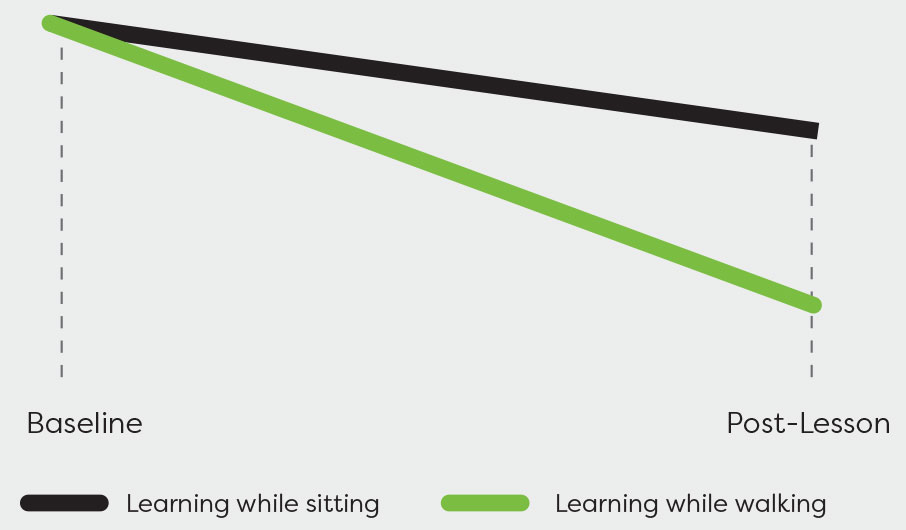The results of the second UNC study on health literacy and physical activity posting soon!
Walking improves student learning and retention!
This research study was conducted in spring 2018 by researchers from the University of North Carolina at Chapel Hill to test the impacts of The Walking Classroom on learning.
Research Study Details
Research Team:
Erianne Weight, Ph.D., and a team of researchers from the University of North Carolina at Chapel Hill
Study Purpose:
To test the impact of learning during physical activity on student short-term and long-term learning retention, cognitive performance, mood, and attitudes toward learning.
Participants:
319 4th and 5th grade students from four public schools in a single North Carolina county were included. This sample was representative of the grantee population of Walking Classroom users. The average percent of students eligible for free/reduced lunch was 81.25% (2 schools at 99%), and the average end-of-grade reading test proficiency was 40.75% (ranging from 28% to 52%).
Testing Dates:
Spring 2018
Methodology:
Students completed a series of measures over four testing periods to assess learning (via podcast quizzes), mood (via PANAS-10), cognitive performance (via 3-minute timed multiplication tests), and attitudes toward learning (via lunchtime focus groups). The testing was gathered at baseline (one week prior to podcasts), post walking and listening to podcasts, post sitting and listening to podcasts, and one week after the podcasts were delivered (to measure learning retention).
Report Downloads:
Research Results
1—Walking improves student learning and retention
Students demonstrated significantly higher levels of learning while walking and listening to podcasts vs. levels of learning when sitting while listening to podcasts, both in short-term, and long-term retention, as measured by performance on the 10-question comprehension quiz on podcast content.
In addition, walking had a significant positive impact on cognitive test performance as measured through a 3-minute multiplication test administered post-walk.
2—Walking improves student mood
All positive-affect markers increased after walking and listening to podcasts and decreased after sitting and listening to podcasts.
Similarly, negative-affect markers all decreased after walking, demonstrating a strong positive influence of the Walk, Listen, and Learn program on student mood and attitudes toward learning.
Student Positive Affect after Sitting and Learning vs. Walking and Learning
(happy, excited, strong, enthusiastic, alert)
Student Negative Affect after Sitting and Learning vs. Walking and Learning
(nervous, irritable, mad, sad, upset)
3—The Walking Classroom helps students feel happy and strong
Students reported feeling happy, healthy, educated, smart, and excited while walking and learning.
After walking and learning, students felt strong, relaxed, energized, happy, and alert.
Word size above correlates with frequency of words mentioned by students within the discussion.








